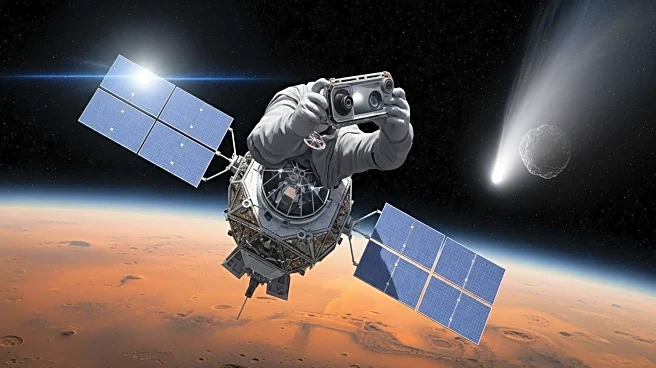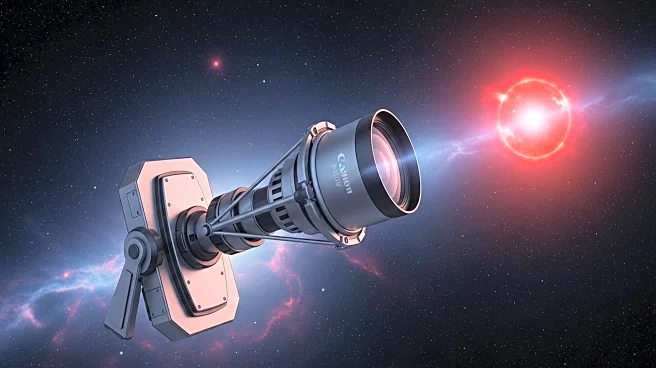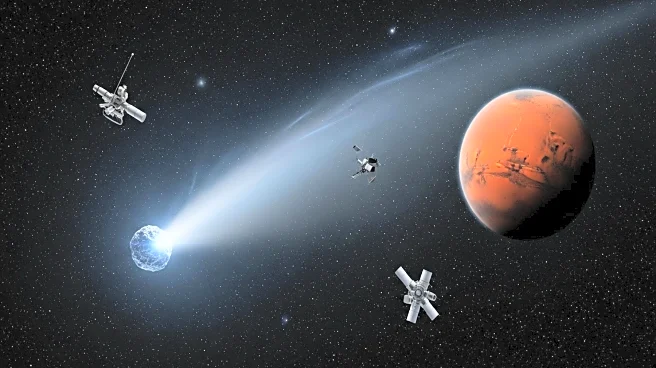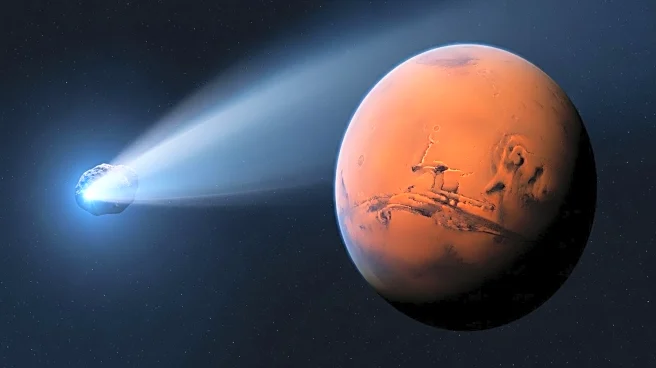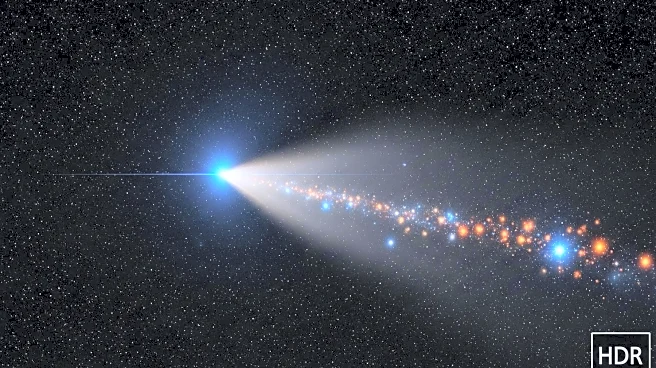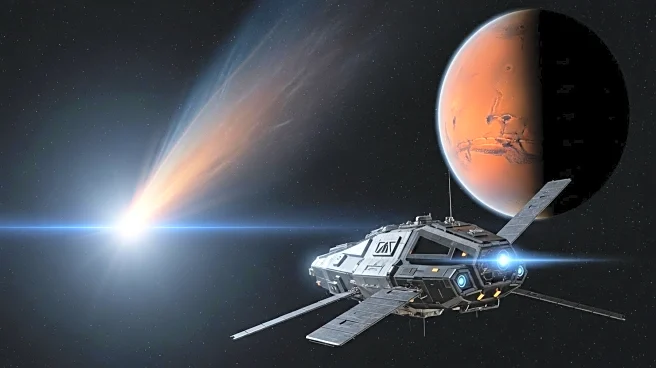What's Happening?
Astronomers are closely observing a rare interstellar object named 3I/ATLAS, which entered the Solar System in July 2025. Discovered by the ATLAS observatory in Chile, this object is only the third confirmed interstellar visitor, following Oumuamua in 2017 and Borisov in 2019. 3I/ATLAS is moving on a hyperbolic path, indicating it is not bound by the Sun's gravity and will eventually leave the Solar System. The object exhibits unusual characteristics, such as traveling along the plane of the planets and having a double tail, which has sparked speculation about its origins. Currently, 3I/ATLAS is behind the Sun, making it invisible to ground-based telescopes, but it will re-emerge in late October 2025.
Why It's Important?
The study of 3I/ATLAS is significant as it provides an opportunity to understand materials from another star system, potentially offering insights into the formation and composition of interstellar objects. The unusual features of 3I/ATLAS, such as its trajectory and double tail, have led to discussions about its possible artificial origin, which, if proven, could have profound implications for our understanding of extraterrestrial technology. The object’s behavior challenges existing theories about interstellar objects and could influence future research in astronomy and astrophysics.
What's Next?
Once 3I/ATLAS re-emerges from behind the Sun, astronomers plan to resume observations using both Earth-based and space telescopes, including the James Webb Space Telescope and the Vera C. Rubin Observatory. These observations aim to determine the object's size, shape, and rotation more precisely. The scientific community is eager to study its changing brightness and gas emissions as it approaches its closest point to the Sun. The findings could either confirm or refute the speculations about its artificial nature, impacting future interstellar research.
Beyond the Headlines
The possibility of 3I/ATLAS being an artificial object has reignited debates about extraterrestrial life and technology. While most scientists remain cautious, the alignment of the object with the planetary plane suggests a precise approach, which could be indicative of intelligent design. This scenario raises ethical and philosophical questions about humanity's readiness to encounter and understand potential alien technology. The study of 3I/ATLAS could lead to long-term shifts in how scientists approach interstellar phenomena.


